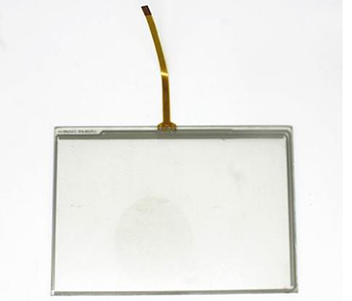In an analogue configuration, the electrodes are placed on opposite sides of the layers without any specific patterning. Regardless, pressing or touching the surface of a lcd touch screen panel allows the two layers to make contact, and when the electrodes touch each other, it triggers a touch command.
Resistive touch displays are pressure-sensitive screens, It support both finger and non-finger input.
Though with the fast development of projected capacitive, resistive touchscreen devices market is shrinking rapidly, but it is still the first choice for specified applications, like underwater usage devices,
printers, digital cameras, automotive, medical etc. One main advantage is no false touch, as the name suggested, it works by physical pressure, not sensitive to water or electromagnetic interference, so it can obey the instruction precisely. Secondly, lower-cost especially for a bigger size, normally 10 inches above screens, we choose Resistive touchscreen.
Exson provides flexible service in design, construction, can assist screen debugging, help design PCBA, no matter low cost or enhanced optics, we can meet your projects’ unique requirements. Browse our categories below or contact us directly for a trusted solution.
| Product | Size | Resolution | Picture | Part Number | Structure | Drive_IC | Interface | Brightness | Viewing (Grayscale) | OD Size (W*H*T) | AA_Size (mm) | Op. Temp | St. Temp |
| 7.0 Inch 800x480 WVGA 40PIN TTL CTP TN 450nits Resistive Touch Screen | 7.0 Inch | 800*480 |

|
EX07050-A01+RT01 | TFT | EK9713CA & EK73002ACGB | TTL 40PIN | 450nits | 6:00 | 164.9*100*4.7 | 154.08 * 85.92 | -10~50°C | -20~60°C |
Lower cost as structure simple
Can be activated by any object with pressure thanks to its pressure applied feature.
Not sensitive for the stimulation of water/dirty
Less power consumption.
Four-wire resistance screen works by using glass bottom and film top layers of the touchscreen “sandwich” to compute the X and Y coordinates. The same with other resistive touch screens, it detects pressure changes to react.
The main differences as below:
Input method different: resistive touchscreen supports various ways like fingers, stylus, or any other object with pressure, while capacitive screens only support body touch.
Surface material different results in different durability. the resistive touchscreen is Film+Glass, capacitive Glass+Glass/Glass+Film, the surface hardness is different when there is a crack, resistive touch display would be easy breakdown, but the capacitive can still work even with a small crack.
Different anti-interference ability. Capacitive touch display with less anti-interference ability due to its sensitive characteristic.

 Call us on:
Call us on:  Email Us:
Email Us:  2F-M1 XiaWei Industrial Park, GuanLan, LongHua District, SZ, China
2F-M1 XiaWei Industrial Park, GuanLan, LongHua District, SZ, China